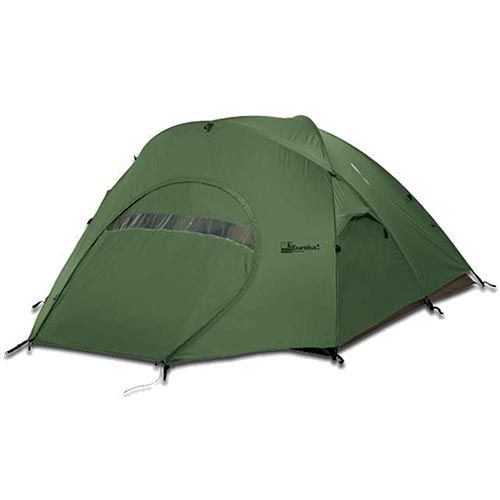One thing I often notice about the texts I edit is their dependence on an external set of references to establish their form. It got me thinking about an analogy, namely, two different tent designs. The first is the familiar military-style pole tent.
Notice all the poles and guy ropes that are required to give the tent its shape, and how the skin hangs loosely off the poles, offering very little surface tension. Texts like this can be recognized by rather abrupt passages between the elements (poles) of perfectly good outlines (e.g., introduction, method, theory, results, discussion, conclusion) and a sense that the citations (ropes) are the main source of truth and meaning of the sentences they support. It is also often clear that the only people who can really make sense of the empirical content are those who have the experiences that ground the paper. That is, the paper is held up precisely by being pegged down. It will stand up only in the exact spot that it's been built.
By contrast, a modern, self-standing tent uses few poles and sometimes no guy ropes at all to establish its structure.
It retains its shape even if you pick it off the ground and shake it. (A good way to "sweep" it out.) You can set it up, and if the ground underneath it turns out to be too lumpy you just move it somewhere else.
That's not possible with the old-style pole tent. Not only would you have to take it down altogether and set it up from the beginning, it takes a good deal more work to get it all done. It also takes more people, some of whom have to hold poles while others attach the ropes.
Imagine the difficulty of setting a tent up and pulling it down as what a reader has to do in order to "use" you text, to "inhabit" it, as it were (always temporarily of course). The trick is to stitch your material together as a coherent whole (the skin) so that once the logic of the argument is introduced (the poles) a nice rigid shape results. It means having an eye for internal rigour of your text, not just its external tenability.
There will always be a need for some external support, of course. To sleep in a tent it will have to rest squarely on the ground. A few well-placed pegs and guy ropes will not only keep the tent from blowing off in a high wind (discourse can be a stormy business, as you know), it will keep the fly off the cabin and reduce the chances of the rain getting in. But, at the end of the day, if you can pick up your text and shake the dirt out of it, you've done something right.

No comments:
Post a Comment
Note: Only a member of this blog may post a comment.